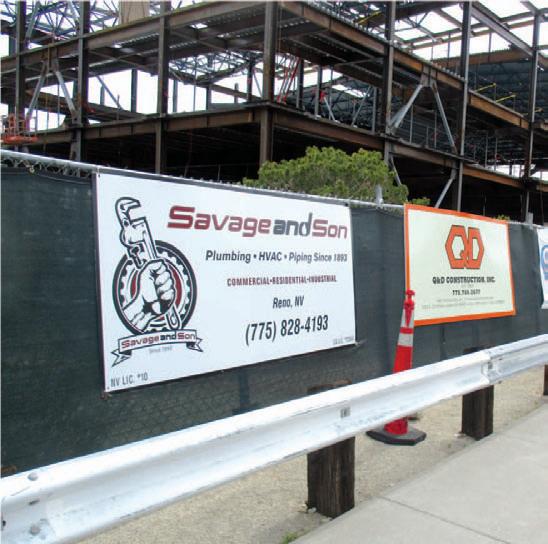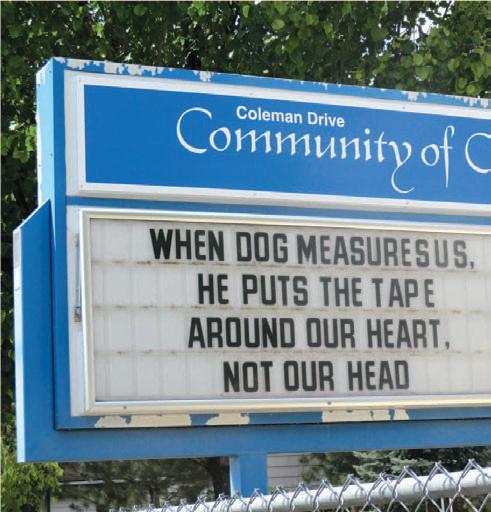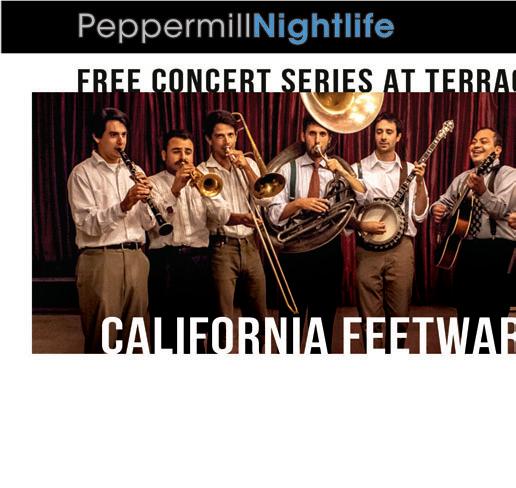
10 minute read
News
from May 5, 2016
Buffett on net metering
Warren Buffett last week repeated to his shareholders the same explanation that his local functionaries have given for why he and his company leaned on Nevada regulators to hike financial costs for net metering customers in the Silver State.
Advertisement
“Ninety-nine percent of our consumers were being asked to subsidize the one percent that had solar units,” Buffett said. “I personally think that if society is the one that’s benefiting from the reduction of greenhouse gases, that society should pick up the tab.”
While that explanation has been widely repeated, an independent report commissioned by the Nevada Public Utilities Commission said net meterers are not being subsidized by other customers. Only a report by NV Energy—a subsidiary of Berkshire Hathaway Inc.— makes that claim.
Buffett’s comments came at a stockholders meeting of Berkshire, which owns NV Energy and 90 other businesses—energy, insurance, manufacturing, railroad, retail and other firms. He also said Berkshire can live with either Donald Trump or Hillary Clinton as president.
“If either Donald Trump or Hillary Clinton becomes president, and one of them is very likely to be, I think Berkshire will continue to do fine,” he said.
Berkshire also did not join the growing list of corporations expressing their concern about climate change, including nine of the nation’s largest firms—such as Walmart and Goldman Sachs—that announced they are switching to renewables for all their power. Berkshire stockholders rejected a resolution calling on the corporation to report on the risks faced by its insurance companies as a result of climate change. Buffett declined entreaties that he take a stand against fossil fuels.
Amid the debate on net metering, the public relations specialists at NV Energy chose this week to announce the corporation is making low-cost renewable energy available—to large users.
What goes around
Peabody Coal, the world’s largest privately owned coal company, filed for bankruptcy in April.
Peabody is currently the focus of a book, Unreal City, that describes how Western politicians in the mid- to late 20th century manipulated Hopi and Navajo tribes in Arizona to obtain their land, water, and massive coal deposits to feed the growth of cities like Phoenix, Las Vegas and Los Angeles. Peabody was the corporate beneficiary.
The bankruptcy is raising concerns about Peabody’s pension and reclamation obligations and whether they will be fulfilled.
More one-party elections
Last week we reported on races that use the primary election instead of general elections to elect public officials. It happens when only members of one political party file for an office. All other voters—the opposing party, third parties, nonpartisans—are barred from voting for the officials who represent them.
Word keeps arriving of more races in which this is happening. According to the Pahrump Valley Times, two county commissioners in Nye County will be elected solely by Republican voters. In commission districts one and three, only Republicans filed for those seats so nonpartisans, third party voters, and Democrats will be prohibited from voting on who their county commissioners will be.
In Washoe County, the Nevada Assembly district 26 and County Commission district 4 races are limited to Republican voters.
Mixed message
The University of Nevada, Reno is getting full use out of the term gateway. Besides its plan for removing the neighborhood just south of the campus, UNR has a University Studies Abroad Consortium student gateway account, an annual Fulbright Gateway Orientation, the Gateway Plaza at the student union (which is far distant from the historic homes), and a Gateway Math Course.
And recommendations 38, 39 and 40 in the Urban Land Institute’s recent report to the city all read, “Add a City of Reno / UNR gateway monument at the corner of Virginia + McCarran Streets.” The recommendations don’t explain why they call for the marker.
Southbound
Campus wins homes battle
The Reno City Council gave the University of Nevada, Reno campus what it wanted by last week, signing off on a master plan Dennis Myers change that allows UNR to do what it wishes with a lineup of 19th century homes off the campus. The council might have liked to do otherwise—it did cancel transfer of a park to the campus—but both citizens and councilmembers themselves pointed out that the council had helped create the problem by interfering in university affairs when the campus was planning to expand to the east. The council wanted the campus to start moving downtown, to the south. An afternoon session of the
Marc Johnson UNR President
council began when the UNR dispute was scheduled to be heard, but the council was running behind and first heard discussion of a labor-business compromise that settled an issue of licensing of plumbers and electricians.
There was little of that kind of cooperative spirit on the campus item. UNR President Marc Johnson used soft words like “working together” but gave not an inch on the issue of constructing a new business building on the site now occupied by a lineup of Queen Anne homes on the west side of Center Street—directly across the street from two campus-owned vacant lots.
“What we can say is that we do need to, right away, identify a location for a business building so that we can begin raising funds for that,” he said.
Several weeks ago, the Reno City Council delayed action on the master plan and told the campus and historic preservationists to meet and try to work out an agreement.
Reno Historic Resources Commission chair Alicia Barber told the council last week, “You charged the HRC and UNR with showing you how this collaboration could work.”
She quoted Johnson at that earlier meeting telling the council, “We are committed to work with the HRC and start from scratch. We haven’t got the building built yet or designed. We will continue that discussion and find some good alternatives before we finalize the design.”
But Barber said the campus did not start from scratch and barely participated in two meetings held since the council put the two groups together. She called the two meetings “very disappointing.”
At the first meeting, she said, “One of the university planning consultants was in attendance but did not participate at all in the conversation. The university did not even provide a map or engage in a discussion of how the historic houses could be incorporated into their plan. … They heard us out. They reiterated their position.”
At the second meeting, this one
One indication of why “the development community” is taking such an interest in UNR’s gateway project is the number of contractors who could benefit from it. This array of contractors’ signs appears on the $46 million UNR fitness center now under construction just south of Lawlor Events Center.
open to the public, she said, “They did not come prepared with a presentation or statement. They did not present their current plans for the business building and gateway, which I’m pretty sure are completed. They did not show any renderings. They did not even bring an architectural planning consultant with them. Instead President Johnson informed us again that their new College of Business building would be sited on the west side of Center Street.”
She reminded the council that Johnson had promised to provide the alternatives to the council. “I don’t think you have seen any alternatives, and I certainly have not seen any alternatives.”
Johnson said, “I would characterize our conversations a bit differently than they have been portrayed to you. We have come together on several occasions. ... But we have also expressed our interest that in the next 20 years, about the only direction the university can grow with academic buildings is to densify the region south of the campus. …
“We’ve also made it clear that we cannot today tell you exactly what the building construction plan will look like in this area ... because we don’t know how the community is going to develop south of the highway. We don’t know the exact developments of the university itself over the next 20 years. We can’t tell you exactly what will go in the next two or three buildings in the gateway area. … So we will say we hope that you will adopt the general master plan of the university into the city. We commit to continuing to work on options for the preservation of historic resources, these historic homes. We don’t know that they necessarily have to stay in the locations that they are, and we will work on some options in that regard. … The growth of the university is going to be rapid and large, and it’s going to be very important to the future of this community.”
Businesspeople were present to tell the council they support Johnson’s plans. The lineup of 19th century homes are immediately adjacent to Interstate 80, which was put through the center of Reno in the 1960s at the behest of the business community instead of north of Reno through undeveloped land.
Downtown developer Par Tolles: “If the handcuffs are not taken off of this university’s ability to grow and thrive, even when it involves some difficult decisions, we will squander what is a unique window of
opportunity to enhance arguably our greatest attraction to this city. I urge you, the education council, to support the gateway expansion and send a positive message to the business community.”
Economic Development Authority of Western Nevada president Mike Kazmierski: “Your support sends a message not only to the university that you trust them to be responsible in what they’re doing but that you’re also really telling the development community that you’re going to engage in and be a part of this reinvention of our downtown.”
John Griffin of the Eldorado Casino and Associated General Contractors lobbyist Alexis Miller also supported the project. University official Heidi Gansert did not speak but recorded her support. Two homeowners in the campus neighborhoods were heard. Frankie Sue Del Papa, a former Nevada regent and UNR student body president who lives west of the campus, said the two sides should be working together as the unions and business had worked on the plumber/ electrician problem.
“This is a work in progress,” Del Papa said. “It’s a partnership. … Make sure everyone’s feet are held to the fire.”
She also said the UNR-proposed shutdown of Center Street would create “real transportation problems.” She previously sat on the Nevada Transportation Board.
Michael Graham, a former UNR campus newspaper editor who lives on the east side of the campus and described himself as a UNR supporter, told the council, “And I really think if there had been public input into the project in a formal sort of way, that all of this stuff would have come up, probably in front of the neighborhood advisory board for ward five. ... Knowing the university, they’ve built two or three major projects right next to where I live, and I’ve had absolutely no warning until they put up fences. And this kind of doesn’t sit well with homeowners in there.”
In the days after the meeting, Barber wondered if UNR—a state agency—is in violation of Nevada Revised Statute 383.121, which requires state agencies to cooperate with the Nevada Historic Preservation Office “in order to salvage or preserve historic evidence located on property owned or controlled by the United States, the State of Nevada or its political subdivisions.” Barber said the university has not made contact with the Preservation Office.
The City Council mandated cooperation between the campus and historic preservationists, but it is nonbinding language. Ω
Alicia Barber Reno Historic Resources Commission
Dog bless America















